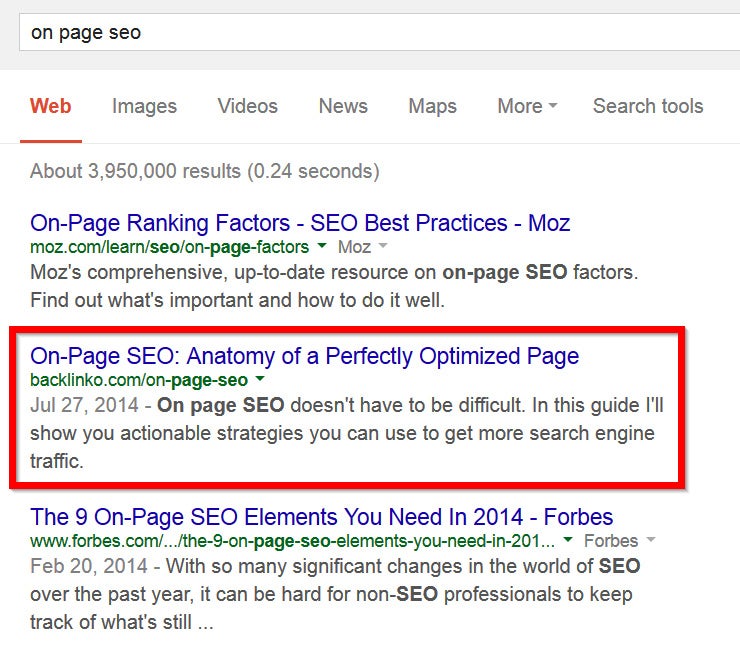Author: Neil Patel / Source: Entrepreneur
Editor’s Note: In “Tough Love Tuesday,” our first-ever summer success series, we’re connecting side-hustling entrepreneurs with support, resources and advice from amazing experts. Sign up for our email newsletter to be notified about our Tuesday Facebook Lives and check back to our side hustle topic page for more helpful tips.
Below is an article syndicated from Neil Patel’s website, who was our guest for Tough Love Tuesday, in which he discusses how to get rank-boosting links to help with SEO. Check out the video for more insight on improving your SEO to increase your pageviews.
Not all links are created equal.
Contextual link building requires the most difficult types of links to get, but they have a strong impact on search rankings.
The truth is that links are still the most important component of the search algorithm. No matter how useful its content may be, a site without links is far less likely to rank highly in organic search results.
Contextual link building — links that are surrounded by text in the body of content — have a higher SEO value than links that appear in the footer or sidebar.
The rules surrounding contextual link building seem to be always changing. Through its Panda, Penguin, and Hummingbird updates, Google’s making it even harder for site owners and bloggers to get quality incoming links.
It gets even worse. According to Jayson Demers, “Building links can, in fact, do more harm than good — especially if you do it wrong.”
In order to get the authoritative links that Google respects and sustain your search rankings, you need to concentrate on getting contextual links (i.e., links surrounded by relevant content).

Contextual link building is the quickest way to boost your site’s search performance. Over the past 10 years, I’ve been creating link-worthy content that people frequently cite and share, even when I didn’t ask for it.
These social media shares and off-page search activities led to my blogs attracting over 1 million organic search users per month.

1. Connect with content curators for contextual links.
I give the Google team a lot of credit.
They’ve done a great job leveling the SEO playing ground for both aged and new sites. Anyone with a site that provides useful content and has the right network can now drive organic traffic.
You can speed up the process of getting useful links by connecting with content curators.
HubSpot defines “content curation,” as the process of “finding information relevant to your audience from a variety of sources and sharing it strategically through your communication channels.”
If you can connect with content curators who make these resources available on the web, you’ll increase your chances of getting your links in context.

Content curators use social media and search engines to find content worth curating.
According to Curata, “79 percent of marketers use social media to find content for their curation strategy.” This is compared to the 63 percent who rely on “company newsletters and subscriptions.”

First step: Go to Google and try a search engine query with any of the following strings:
- Top list blogs + your keyword
- Best blog posts + your keyword
- Top link building posts + month
Here’s the result that I got on the search engine, when I searched with the first string:

Second step: From the curated pages that appeared in the search engine results, click on one of them to review the page and its links. When I clicked on the first result, here’s what the page looked like:

Third step: Reach out to the author. Click on the “contact us” tab and connect with the content curator or blog owner.

Email outreach is the quickest way to connect, communicate and build a relationship with content curators and site owners. When I’m looking to get a link, here’s one of the emails that I send to site owners:

When you write emails to content curators, bloggers and influencers — especially those whom you’ve not familiar with — make sure that you do the following:
- Keep the subject lines in lower case letters: Emails that appear casual, as if you’re sending it to a friend, work best for email outreach.
- Personalize: To avoid coming off as spammy, use the recipient’s name in the email.
- Be creative: Write emails that persuade people to click and respond to you. Boring emails won’t trigger a response or probably get read at all.
2. Leverage the guestographic strategy.
Back in 2011, you could use blog commenting to get 200 backlinks and quickly skyrocket your rankings on search engines. But, in today’s algorithm for search engines, the focus is on quality over quantity.

Sometimes, all that you need are five to 10 relevant links, from authoritative sites, to begin seeing results from Google and other search engines.
Through the guestographic strategy, you can get relevant links from those authoritative sites much more easily.
When Brian Dean coined the concept of the guestographic and implemented it, he quickly increased traffic across search engines by 175.59 percent over the previous month.

Now, Brian Dean ranks No. 1 for a high volume keyword — “on-page SEO” — all because he used the guestographic strategy.

Guestographics are a contextual link building service that can truly help you to achieve these goals. To implement the guestographic strategy for yourself, follow these five simple steps:
- Design and post…
Audience Team
The digital audience insights you need to build, manage and market to your digital audiences.

